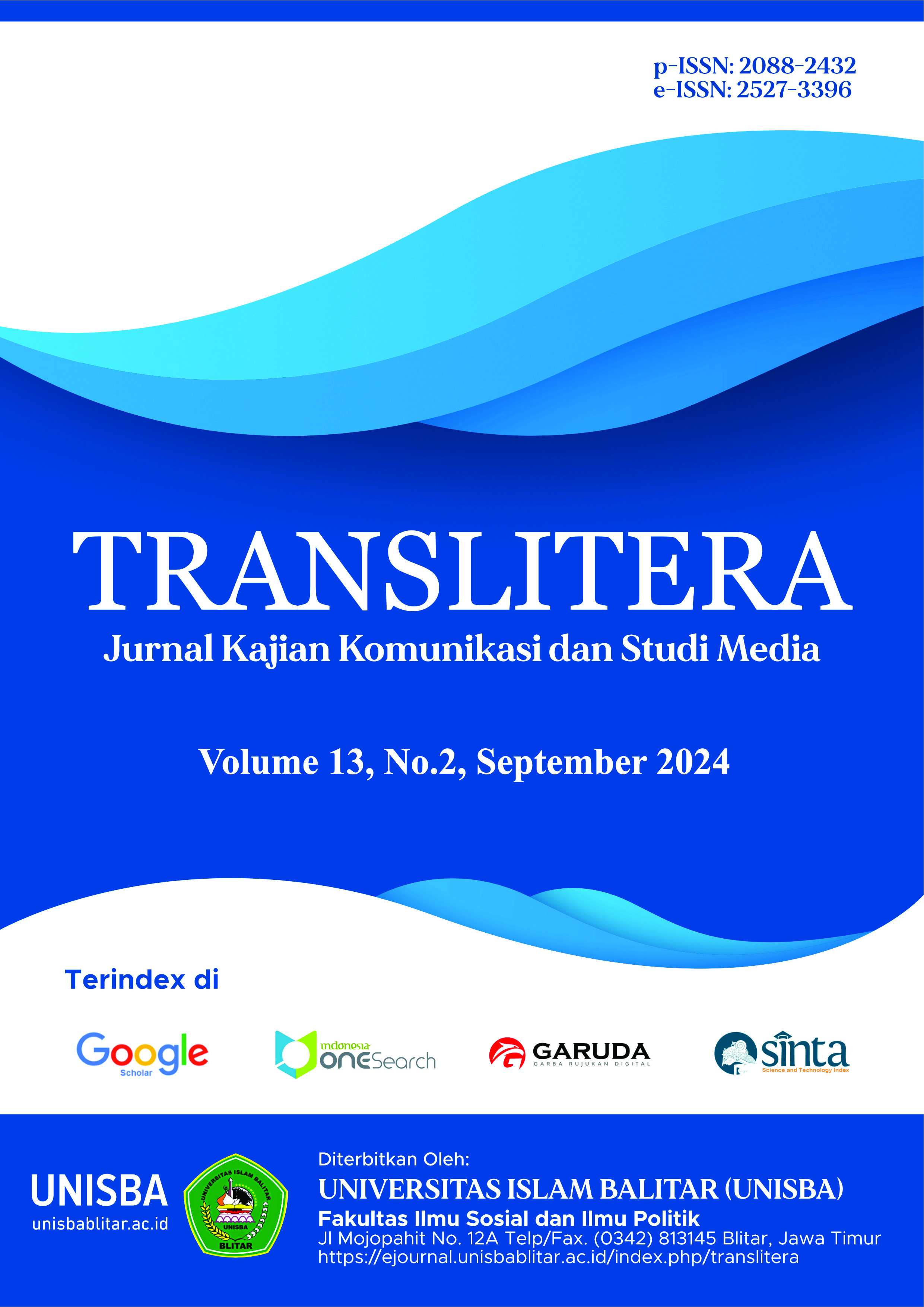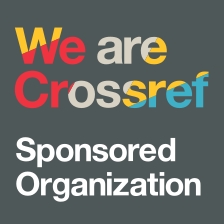Nano influencer di Instagram sebagai Alternatif Medium Promosi Toko Buku di Yogyakarta
DOI:
https://doi.org/10.35457/translitera.v13i2.3910Keywords:
Nano Influencer, Social Media, Instagram, Alternative Medium, BookstoresAbstract
Promotional media via the internet has altered perceptions and created a challenge for businesses to make prominent advertisements. Consequently, innovative promotional designs are required to attract the target audience and ensure the messages conveyed are seen, heard, and read. The main point is that the more promotional alternatives are available, the less effective they will be. In this matter, consumers bombarded by promotional information tend to avoid it. The promotion strategy using nano influencers based on interpersonal relationships is effective because the messages are intended to influence attitudes and instill trust in others. Nano influencers are different from other types of promotional media because of their capacity to elicit emotional responses. The descriptive qualitative research method is used to examine respondents who have reasons and motivations for purchasing books after seeing nano influencer posts on Instagram. According to information obtained from 100 Yogyakarta respondents, 75,8% of book readers in Yogyakarta have purchased books after being influenced by nano influencer posts on Instagram. The research concluded that the internet approach through nano influencers for alternative promotional media in Yogyakarta is impactful because nano influencer posts can attract attention and create an understanding of a product.
References
[2] Lee, H., & Cho, C.-H. (2017). An empirical investigation on the antecedents of consumers’ cognitions of and attitudes towards digital signage advertising. International Journal of Advertising, 38(1), 97–115. https://doi.org/10.1080/02650487.2017.1401509
[3] Taylor, C. R. (2019). Over the Top, Connected, Programmatic and Addressable Television! What Does It All Mean? Definitions and a Call for Research. International Journal of Advertising, 38(3), 343–344. https://doi.org/10.1080/02650487.2019.1599200
[4] Truong, Y., McColl, R., & Kitchen, P. (2010). Practitioners’ perceptions of advertising strategies for digital media. International Journal of Advertising, 29(5), 709–725. https://doi.org/10.2501/s0265048710201439
[5] Khamis, S., Ang, L., & Welling, R. (2016). Self-branding, ‘micro-celebrity’ and the rise of Social Media Influencers. Celebrity Studies, 8(2), 191–208. https://doi.org/10.1080/19392397.2016.1218292
[6] Lin, H.-C., Bruning, P. F., & Swarna, H. (2018). Using online opinion leaders to promote the hedonic and utilitarian value of products and services. Business Horizons, 61(3), 431–442. https://doi.org/10.1016/j.bushor.2018.01.010
[7] Hudders, L., De Jans, S., & De Veirman, M. (2020). The commercialization of social media stars: a literature review and conceptual framework on the strategic use of social media influencers. International Journal of Advertising, 40(3), 327–375. https://doi.org/10.1080/02650487.2020.1836925
[8] Katie Paulsen, (2021). The Benefits, Pitfalls, And Differences Of Influencer Marketing Tiers From Micro To Celeb. Retrieved from https://www.rhythminfluence.com/blog/the-benefits-pitfalls-and-differences-of-influencer-marketing-tiers-from-micro-to-celeb/
[9] William, Carrie. (2007). Research Method. Journal of Business and Economic Research, Vol 5:3.
[10] Triyaningsih, S. L. (2011). Dampak online marketing melalui facebook terhadap perilaku konsumtif masyarakat. Jurnal Ekonomi dan Kewirausahaan, 11(2).
[11] Hudders, L., & Lou, C. (2022). A new era of influencer marketing: Lessons from Recent Inquires and Thoughts on Future Directions. International Journal of Advertising, 41(1), 1–5. https://doi.org/10.1080/02650487.2022.2031729
[12] NapoleonCat.com. (2022, September). Instagram users in Indonesia September 2022. Diakses pada 25 September 2022, dari https://napoleoncat.com/ stats/instagram-users-in-indonesia/2022/09/.
[13] Evelina, L. W., & Handayani, F. (2018). Penggunaan digital influencer dalam promosi produk (Studi kasus akun Instagram@ bylizzieparra). Warta Ikatan Sarjana Komunikasi Indonesia, 1(01), 71-82.
[14] Sugiharto, S. A., & Ramadhana, M. R. (2018). Pengaruh Kredibilitas Influencer Terhadap Sikap Pada Merek. Jurnal Ilmu Politik Dan Komunikasi, 8(2). https://doi.org/10.34010/jipsi.v8i2.1333
[15] Miller, D. (2017). Building a StoryBrand: Clarify Your Message So Consumers Will Listen (Illustrated). HarperCollins Leadership.
[16] Brown, D. and Hayes, N. (2008). Business & Economics. Amsterdam: Elsevier.
[17] Booth, N., & Matic, J. A. (2011). Mapping and leveraging influencers in social media to shape corporate brand perceptions. Corporate Communications: An International Journal, 16(3), 184–191. https://doi.org/10.1108/13563281111156853
[18] Calderon, J. (2006). Methods of research and thesis writing (2nd Ed.). Mandaluyong City: National Bookstore
[19] Boerman, S. C., & Müller, C. M. (2021). Understanding which cues people use to identify influencer marketing on Instagram: an eye tracking study and experiment. International Journal of Advertising, 41(1), 6–29. https://doi.org/10.1080/02650487.2021.1986256
[20] Smith, D. R. (2017). The tragedy of self in digitised popular culture: the existential consequences of digital fame on YouTube. Qualitative Research, 17(6), 699–714. https://doi.org/10.1177/1468794117700709
Downloads
Published
Issue
Section
License
Authors who publish with this journal agree to the following terms:
- Copyright on any article is retained by the author(s).
- Author grant the journal, right of first publication with the work simultaneously licensed under a Creative Commons Attribution License that allows others to share the work with an acknowledgement of the work’s authorship and initial publication in this journal.
- Authors are able to enter into separate, additional contractual arrangements for the non-exclusive distribution of the journal’s published version of the work (e.g., post it to an institutional repository or publish it in a book), with an acknowledgement of its initial publication in this journal.
- Authors are permitted and encouraged to post their work online (e.g., in institutional repositories or on their website) prior to and during the submission process, as it can lead to productive exchanges, as well as earlier and greater citation of published work.
- The article and any associated published material is distributed under the Creative Commons Attribution-ShareAlike 4.0 International License












